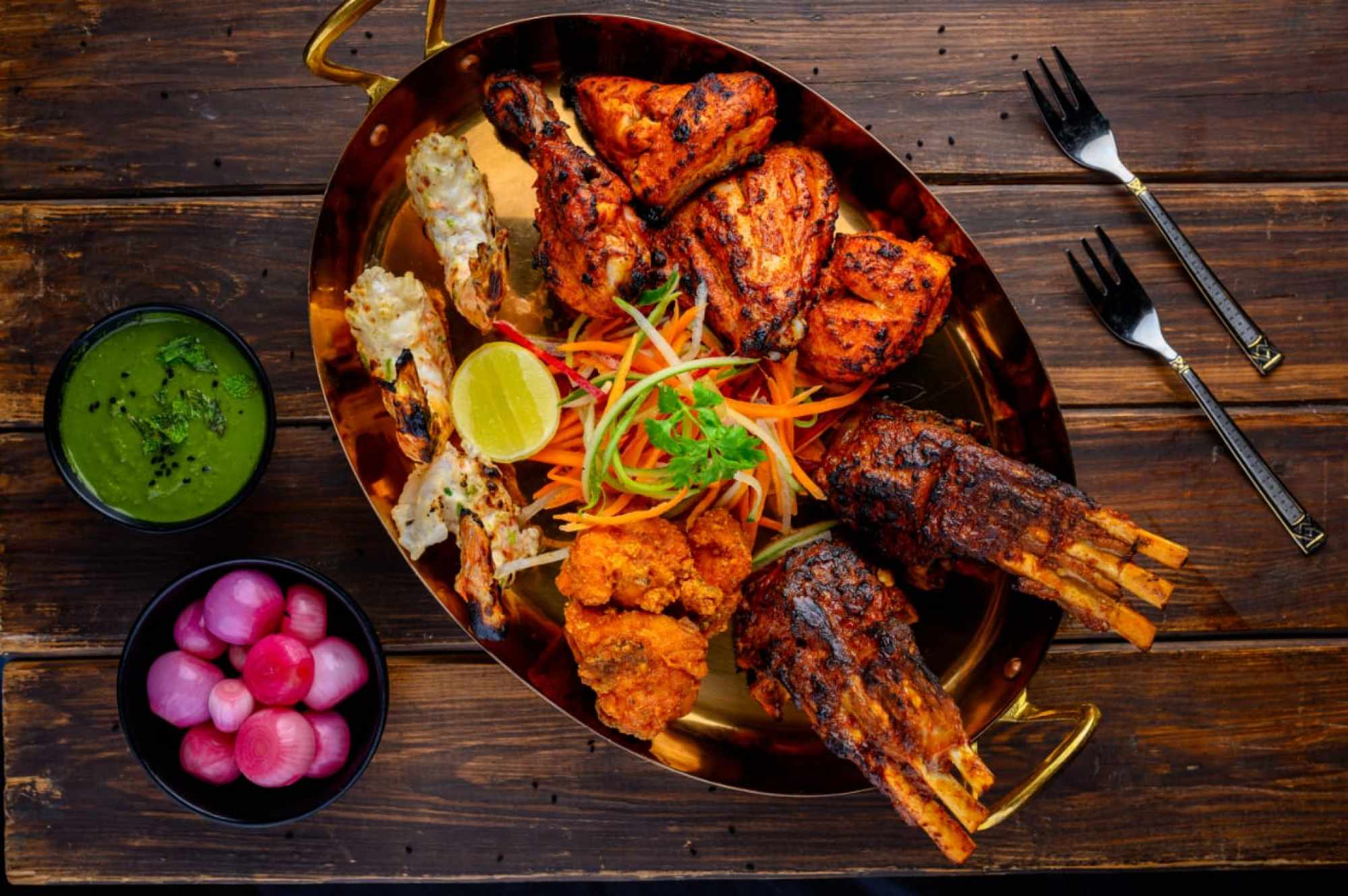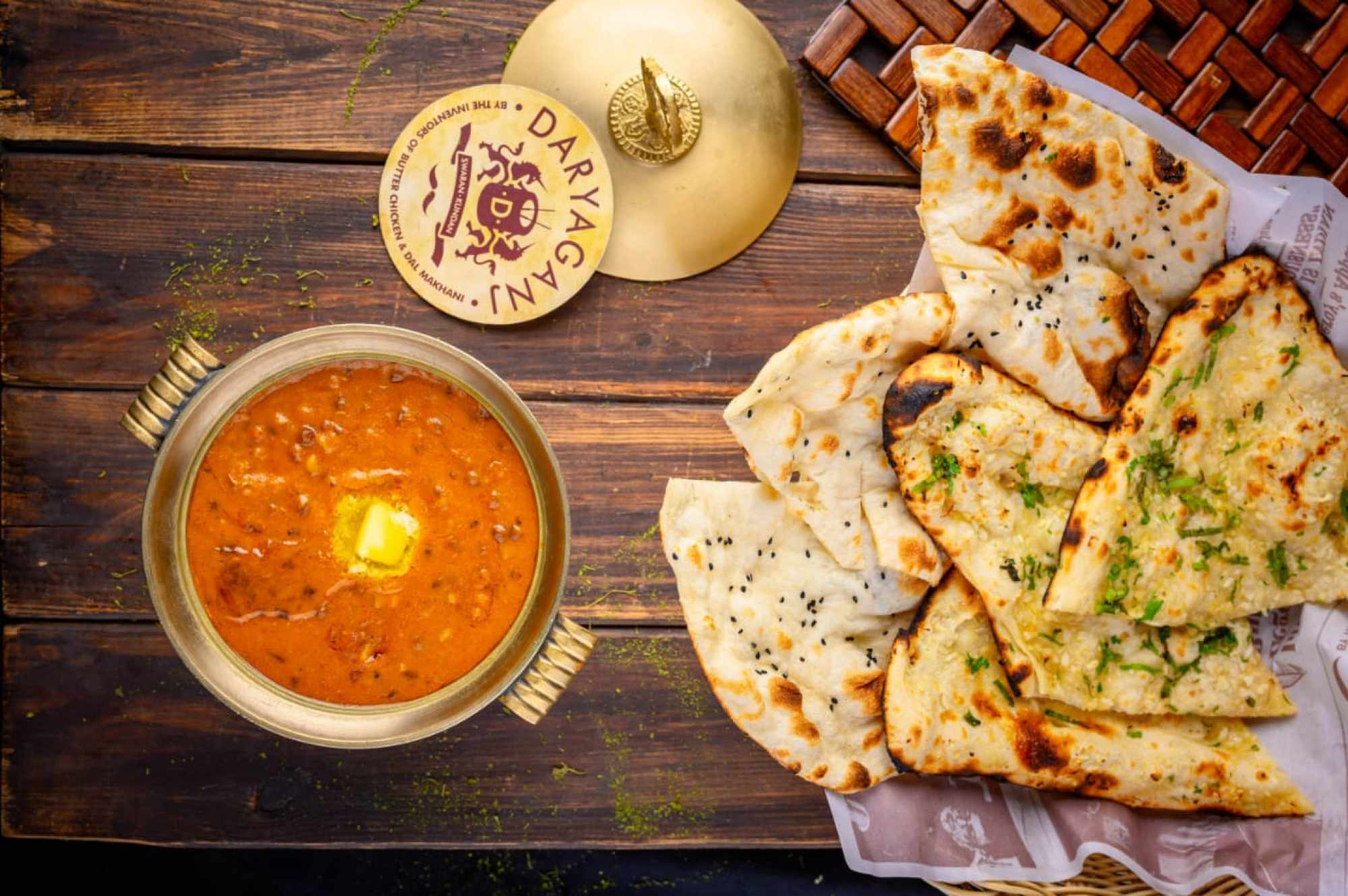
China’s tandoori story: how the oven travelled from India down the Silk Road, feeding communities, stars and presidents
- The tandoor is a versatile, super hot oven that is popular across South, Central and Western Asia
- Sikhs feed devotees for free using communal tandoors, and tandoori cooking has been loved by world leaders
Wait, did I say tandoori cuisine? It was a revelation to see the blazing pits being used in China to cook a staggering variety of dishes. From golden baked dumplings to sesame-encrusted naan bread, juicy kebabs, lamb, samsa (akin to the Indian samosa), a pie bursting with lamb, carrot and onions and more, this is a tandoor lover’s paradise.
However, the question at the back of my mind was – how did the tandoor end up in China? New Delhi-based chef Dwaipayan Sarkar, who has travelled extensively across China, says Turpan was a vital outpost on the Silk Road, a highway of trade routes connecting China, the Middle East and Europe.
“These routes were established by the Han dynasty in 130BC and were central to the economic, cultural, political and religious interactions between these regions,” he says. “Spices, silk, textiles, food, animals, produce … everything was carried and traded on this route and a lot of multicultural mingling was happening, too.

“Many large traders carried their tandoors with them and fed hungry caravans and military scouts as well as local populations. Some traders ended up settling in China, which further popularised tandoori cuisine in the country.”
The tandoor is used in India by everyone from five-star chefs to owners of tiny shops. Sikh temples called gurdwaras have gargantuan tandoors dishing out free meals, called langars, to the devotees. Indian highways are peppered with dhabas serving dal makhani (black lentils simmered in a buttery sauce) and flaky, crisp parathas with blobs of white butter, served with onion rings and green chillies, often accompanied by a tall glass of frothy lassi.
Food is their medicine: South Indian vegetarian dishes explained
In the 15th century, the founder of the Sikh faith, Guru Nanak Dev, used the tandoor to bring people together in a region riven by class and caste friction. He encouraged the construction of common ovens, or sanjha chulha, in neighbourhoods, creating a community based around cooking.
The Punjab is peppered with communal tandoors where people congregate over good food and gossip.
“There’s a gender aspect to the tandoor as well,” explains food historian Aali Kumar, assistant professor of history at Delhi University. “They are a blow to patriarchy because they allow perpetually homebound rural women to come out, relax and socialise with their peers in an alfresco setting. Some women monetise tandoori breadmaking to become financially empowered.”

According to Kumar, the tandoor dates back to between 2,500BC and 2,600BC, with the earliest evidence of it being found in Harappa and Mohenjo-Daro. These two key sites were part of the ancient Indus Valley Civilisation, she explains.
However, it was the Mughals who popularised the modern tandoor across India, with emperor Jahangir being credited with the invention of the portable tandoor. Such was the emperor’s love for the device that his cooks lugged it around every time he travelled.
One of the most detailed Mughlai recipe books, Nuskha-e- Shahjahani, by culinary historian Salma Husain, features grilling, baking and smoking techniques of the tandoor used during Jahangir’s time.
History of chicken tikka masala: loved in Britain, ignored in India
“The clay oven was also found in ancient Egyptian and Mesopotamian civilisations. Tandoors are used extensively throughout India, Pakistan, Afghanistan and other parts of Asia. Older tandoors that were set into the ground and were fired by charcoal wood can still be found in these regions,” explains Sarkar.
According to restaurateur Amit Bagga, co-founder of Daryaganj Restaurant, a pan-India chain of tandoori restaurants, the first commercial tandoor was in Gora Bazar, Peshawar, in undivided Punjab in the 1920s. Here, Mokha Singh started making bread with this new invention, and they became hugely popular.
“Singh teamed up with his colleague Kundan Lal Jaggi, my partner’s grandfather, and ran a successful restaurant by diversifying into tandoori chicken, tikkas and kebabs. After the India-Pakistan partition, hordes of Punjabi refugees fled to India due to the political upheaval, and Mokha and his men were among them.”

The refugees launched Daryaganj in the 1940s, in a colony by the same name in Delhi, which became so famous that India’s first prime minister, Jawaharlal Nehru, invited its cooks to cater for his state banquets.
These soirées were attended by diplomats, which helped spread the popularity of tandoori cuisine overseas. “Iconic personalities, including US presidents Richard Nixon and John F Kennedy visited our eatery. Mr Jaggi was also invited for a food pop-up in Moscow by former Soviet leader Nikita Khrushchev who loved his food so much that he carried back tandoori dishes with him to Moscow!” adds Bagga.
The late Pakistani Prime Minister Zulfiqar Ali Bhutto was also said to be a great fan of tandoori dishes. During the 1960s, the popularity of tandoori chicken in the US peaked after first lady Jacqueline Kennedy enjoyed it on a flight from Rome to Bombay in 1962. The Los Angeles Times published the recipe in 1963.

“Tandoori cooking basically employs four techniques to cook the food thoroughly,” explains chef Sushmit Daniels, executive chef at the Park by Radisson Hotel in New Delhi. “The heat from the pit mimics the effect of baking; direct heat from charcoal allows grilling; the smoke produced from the dripping marinade imparts a smoky flavour; and the hot clay walls provide the griddling effect.”
The chef says the tandoor’s high temperature seals in the juices, resulting in more succulent meat. “Key to good tandoori cuisine is marination. It should neither be overwhelming so as to overpower the protein’s taste, nor underwhelming where the meat remains raw,” says Daniels.
His tandoori hot sellers include mutton burra, chicken tikkas, angaara (“fiery hot”) chicken, fish tikka, stuffed mushrooms, and potato and paneer (cheese) tikkas.

Tandoori meats have a three-step marination process that involves a first marinade of ginger-garlic paste; a second of hung curd; and finally, freshly roasted and hand-pounded spices including nutmeg, cardamom, cumin, black pepper, bay leaves, cloves and cashew paste.
Some chefs also add tandoori rang, an edible food colouring, to give the meat a fiery orange hue.
The tandoor has its own maintenance regime called curing. The oven’s innards are periodically coated with a paste of spinach, brown sugar, salt, turmeric and mustard oil, and left for eight hours. After drying, the oven is left on a low heat for eight hours before it is used again. The same paste is also applied over the tandoor’s cracks, to seal them.
‘I’d sell a kidney for their tacos’: PR firm founder’s Hong Kong dining tips
“Tandoori cooking requires deft handling. If the food is cooked for too long, it will become dry; if it’s not cooked enough, it will lack flavour,” explains Gurpreet Singh Gehdu, chef and COO of Daryaganj restaurant.
Under a good chef, adds Gehdu, tandoori cuisine can be the healthiest and tastiest form of cooking. “The oven’s high temperature cooks the food very fast making external fats such as butter and oil unnecessary. This is why such food is increasingly popular among fitness-conscious millennials.
“Also during current pandemic times, when people are wary of eating out, the tandoor’s blazing heat kills all germs.”

